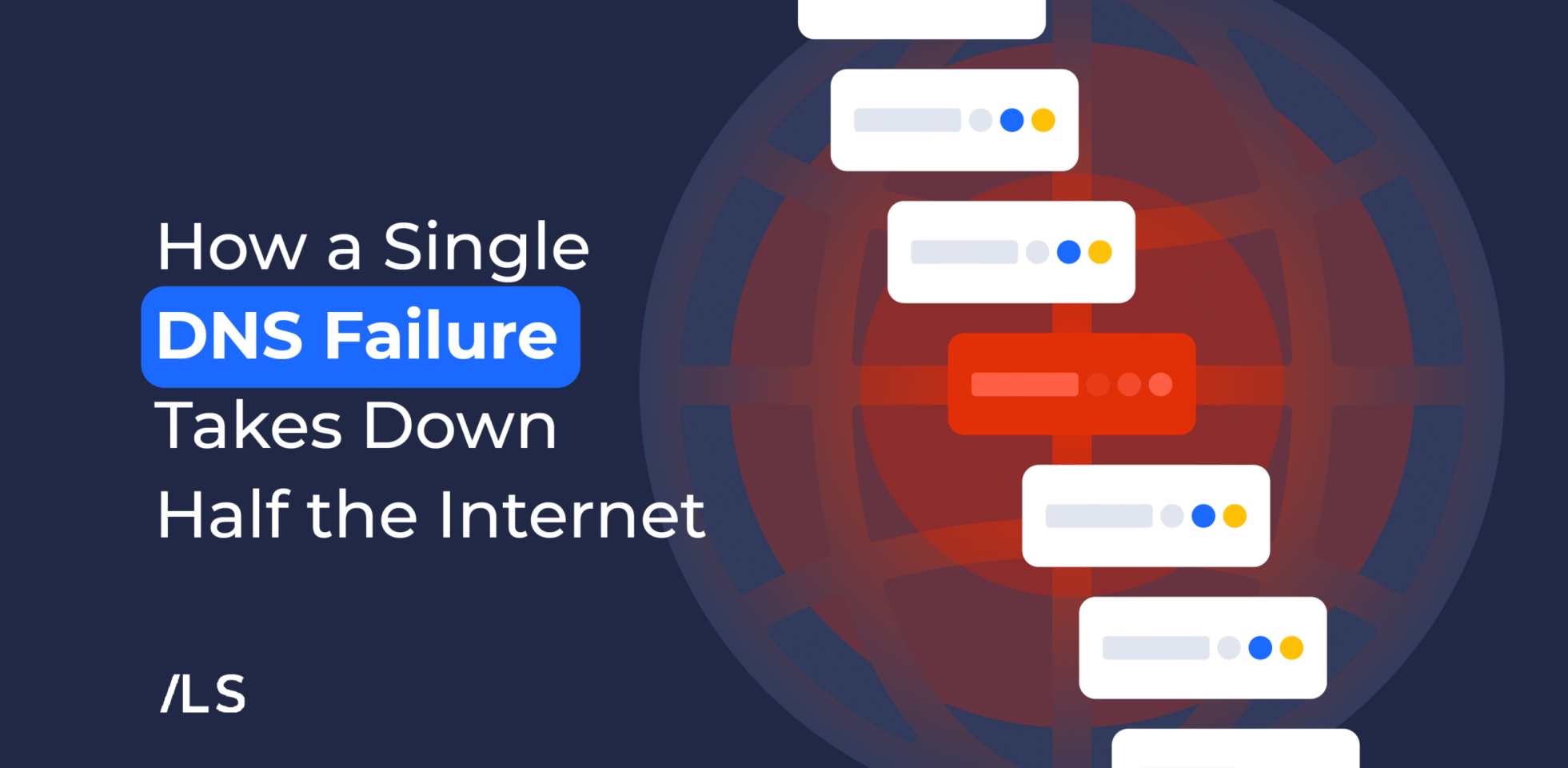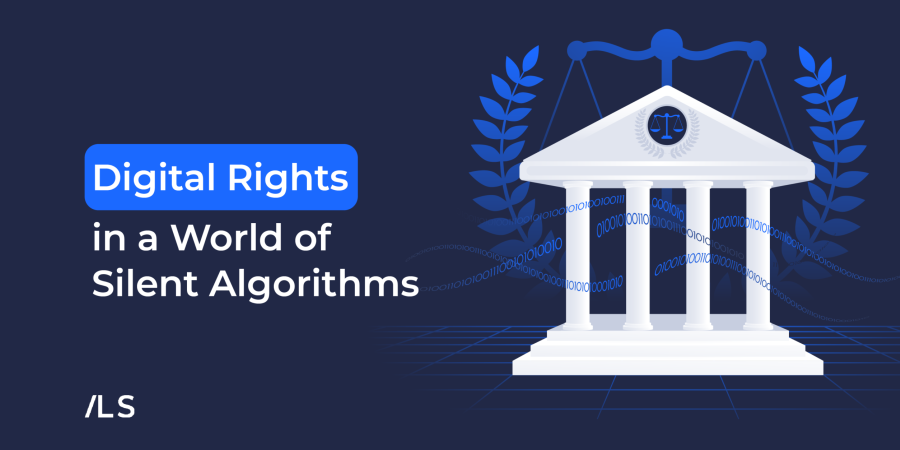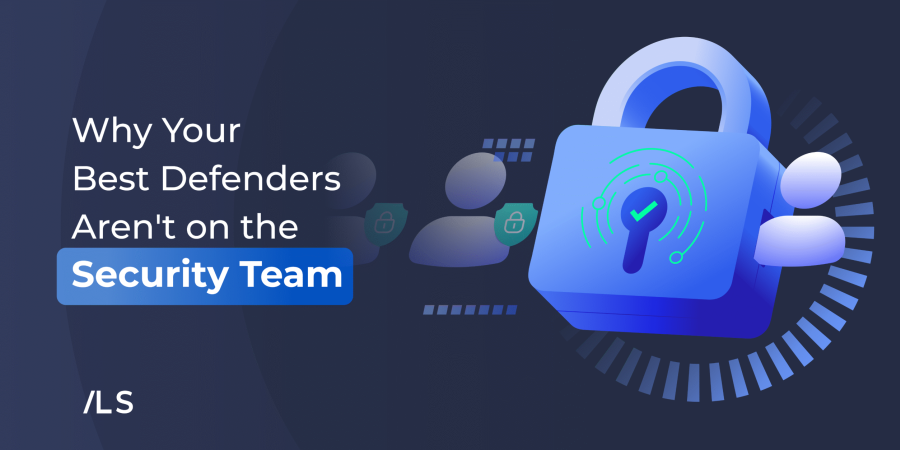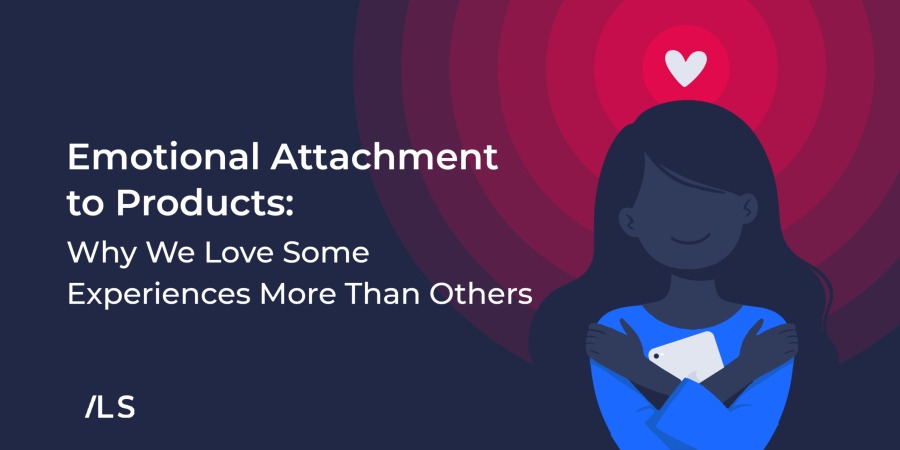Blog
Stay updated with our new news
When the Backbone Snapped: How a Single DNS Failure Takes Down Half the Internet

At 6:30 AM on a Monday, October 20th, millions around the world woke up to a paralyzed internet. Banking applications wouldn’t open, smart doorbells froze, and even platforms designed to report outages were themselves down.
What appeared to be a widespread connectivity meltdown was, in reality, something more precise and more alarming: a single AWS region, us-east-1, suffered a DNS resolution failure. This crack in the system held a mirror up to the entire industry, exposing just how deeply fragile our digital foundations are and how much we rely on DNS—a protocol most people never even consider. This wasn’t just an outage; it was a lesson.
The Backbone We Ignore: Why DNS is Step Zero
Every online interaction you make, from opening a website to logging into an application or calling an API, must first resolve a silent question: “Where do I go to reach this service?”.
That fundamental query is answered by the Domain Name System (DNS). It is rightly called the backbone of the internet. DNS is the mechanism that converts human-friendly domain names (such as example.com) into machine-routable IP addresses (such as 192.0.2.44 or 2606:4700:4700::1111).
DNS in Simple and Technical Terms
In simple terms, DNS serves as the Internet’s address book. However, unlike a physical book, it is a complex, hierarchical, and globally distributed network composed of:
- Root name servers
- TLD servers (like .com, .net)
- Authoritative name servers (holding the actual DNS records)
- Recursive resolvers (often operated by ISPs or public DNS services)
Technically, DNS uses UDP and TCP over port 53. It operates via a stateless query-response model. Resolvers use caching mechanisms that retain responses based on their assigned TTL (Time To Live) values.
When DNS failure occurs, the impact is immediate and catastrophic:
- Your application cannot locate its database.
- Your Content Delivery Network (CDN) fails to serve assets.
- Your APIs cannot connect to the necessary services.
The underlying infrastructure may still be running, but without an address, it is entirely unreachable.
The Address Problem: A Ghost Town with No Street Signs
During the major AWS outage, the core issue was not a failure of compute or storage services like DynamoDB itself; instead, it was a failure of DNS resolution for those services, a perfect example of how DNS failure can paralyze dependent systems.
A regular interaction follows this chain:
- App needs data.
- DNS lookup.
- IP resolved.
- Connection initiated.
- Data returned.
When the outage occurred, Step 2 failed. Applications attempting to access dynamodb.us-east-1.amazonaws.com never received an IP address, causing connection attempts to time out. The database was operational, but it was effectively a “ghost town with no street signs”.
This address problem resulted in widespread failure, including:
- Crashed login sessions.
- 500/503 errors.
- Frozen APIs and applications.
- Blocked job queues.
Convenience Over Resilience
The incident revealed that the true fragility of modern systems doesn’t lie in the cloud vendor’s mistake, it lies in our architectural decisions.
We’ve built convenience at scale, not resilience at depth.
Most organizations, often unintentionally, have created a single point of resolution for their entire infrastructure. The pattern repeats everywhere:
- One cloud provider.
- One region (frequently us-east-1).
- One DNS resolver.
This centralization creates a dangerous dependency chain. When DNS fails, everything fails.
Even systems designed to detect and mitigate outages went dark. Monitoring platforms, dashboards, and alerting tools all depended on DNS to reach their own endpoints.
When the backbone snapped, visibility disappeared. There was no monitoring, no alerting, no auto-remediation, only silence.
The outage didn’t just take services offline; it exposed how deeply our “redundant” systems still rely on a single, fragile layer of the internet’s foundation.
Reinventing Resilience: Solutions from Modern DNS Providers
The lessons learned from such outages have pushed the industry to build systems that treat DNS as critical infrastructure, not an afterthought. Companies like Cloudflare, Google, and Quad9 have reimagined DNS to solve its core weaknesses: centralization, latency, and fragility.
Cloudflare’s innovations demonstrate the modern approach to DNS resilience:
- Global Anycast DNS: This system routes DNS queries to the nearest available node. If a single data center fails, traffic is instantly shifted.
- 1.1.1.1 Resolver: A public DNS service prioritizing speed and privacy.
- DNSSEC Support: Providing cryptographic authentication to DNS responses.
- Secondary DNS and Load Balancing: Crucial for ensuring redundancy across zones and different providers.
- Health-Based Failover: Automatically rerouting traffic away from a failing origin server.
Modern DNS providers are doing far more than just resolving names; they are actively protecting uptime and defending against cascading failures.
Lessons We Must Take Seriously
The AWS outage did not break the cloud; it broke the illusion that our systems were resilient. Because “hope is not an architecture,” engineering teams must implement strategies to navigate even when the map disappears.
Short-Term Resilience Measures
- Implementing client-side caching with generous Time To Live (TTL) values.
- Utilizing circuit breakers for external services.
- Setting up DNS failure-specific alerting.
Long-Term Resilience Measures
- Adopting a multi-region architecture by default.
- Maintaining redundant DNS providers.
- Developing graceful degradation strategies.
- Employing Chaos engineering to test DNS failure scenarios.
Further Reading on DNS (Knowledge Base Articles)
For those looking to deepen their understanding and implement these resilience strategies, the following guides offer valuable insights:
- Cloudflare Learning Center: What is DNS?
- Libyan Spider: Cloudflare Pro
- Google Cloud DNS Best Practices: Guide
- DNSimple: How DNS Works (Animated)
Share:
More Articles


The Security Myth: Why Your Best Defenders Aren’t on…



Leave a Reply